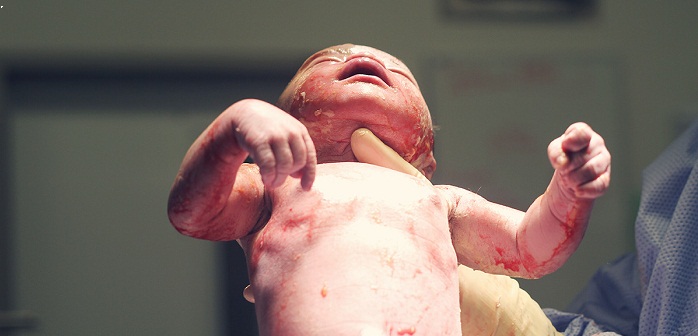Boost C-section babies by giving them vaginal bacteria

A number of studies have found evidence that this C-section microbiome could make the child more vulnerable to problems later in life, such as asthma, food allergies, hay fever and obesity. “Maybe we can reduce this risk by restoring the microbiome of C-section babies,” says Jose Clemente at Mount Sinai School of Medicine in New York City.
We are still getting to grips with just how important the collection of bacteria in our guts – and other body sites – are for our health. The gut microbiome starts developing in the womb but the process really takes off during birth itself, when babies pick up bacteria from their mother’s vaginal canal and skin.
Bacterial bath
For the last few years, Clemente, along with Maria Dominguez-Bello of New York University and their colleagues, have been trying to replicate this process. Before a planned caesarean, they give women a sterile gauze, which is concertina-folded and inserted like a tampon about an hour before the surgery. Just before the women enter the operating theatre, the gauze is removed and bagged. Within 2 or 3 minutes of the baby being born, its mouth, body and anus are swabbed with the gauze.
The team presented some of their early work at a conference a couple of years ago. Word of the procedure spread, and some women started asking midwives and doctors to help them “seed” their own babies, many after seeing a 2014 documentary promoting the idea (see “I swabbed my newborn baby with my vaginal fluid”, below). Now, the group has published their first findings – that seeding really does seem to give a C-section baby a more “vaginal birth-like” microbiome.
The study was small: 18 mothers were included, of whom seven had vaginal births and 11 C-sections. Four of the C-section babies were swabbed with their mother’s vaginal fluid. The team then sampled bacteria from the babies’ mouths, anuses and a range of body sites one, two and three days after birth, and then weekly for a month.
“The C-section babies that were swabbed had a more vaginal-like microbiota than those that weren’t,” says Clemente. For example, there were blooms of a type of bacteria called Lactobacillus in the vaginal-born and the swabbed babies but not in the other C-section babies. It is too soon to tell whether these changes will have any effect on the baby’s long-term health, however.
Health effects?
“It is hard to know whether the changes will last, and if they are sufficient to prime the immune system,” says David MacIntyre of Imperial College London. “But it’s a cheap and easy way of exposing C-section babies to vaginal bacteria at birth.”
Before the procedure, the team screened the mothers for harmful bacteria, such as group B Streptococcus, as well as some viral and fungal infections. Still, as with faecal transplants no one can be certain of not transferring something that might cause disease, or put a baby at increased risk of disease in the future.
Clemente thinks the procedure is safe. “If you were born vaginally, you’d be exposed to the bacteria anyway,” he says. “I would do it.” However, he also advises people not to try the procedure without talking to their doctor. “It’s not particularly complex, but we want to minimise the risk of transferring pathogenic bacteria,” he says.
MacIntyre is more cautious. “We still don’t know what a healthy gut microbiome is, and how it relates to the vaginal microbiome,” he says. “What bacteria would you want to transmit? If a mother is obese or diabetic, for example, it might not be a good idea to transfer her microbiome.” MacIntyre says he would want to wait for more evidence that the procedure is indeed beneficial before trying it himself.
Clemente and his colleagues are continuing their research, and hope to identify specific types of bacteria that are beneficial to newborns. “Maybe 10 years in the future we can find a more effective way to deliver the important microbes,” he says. “The field is still very much in its infancy.”















































